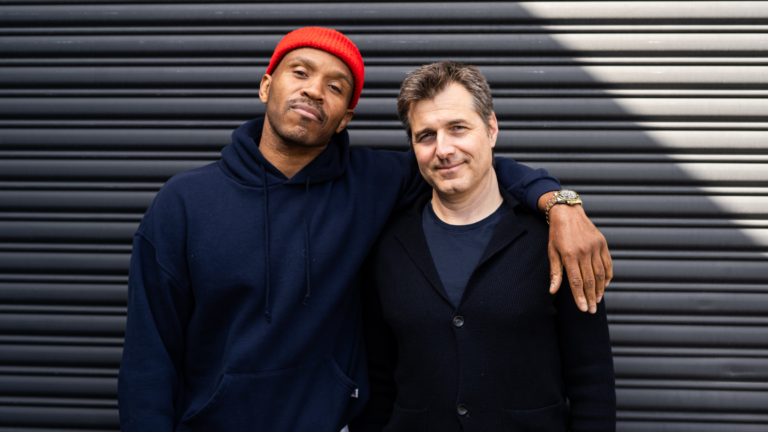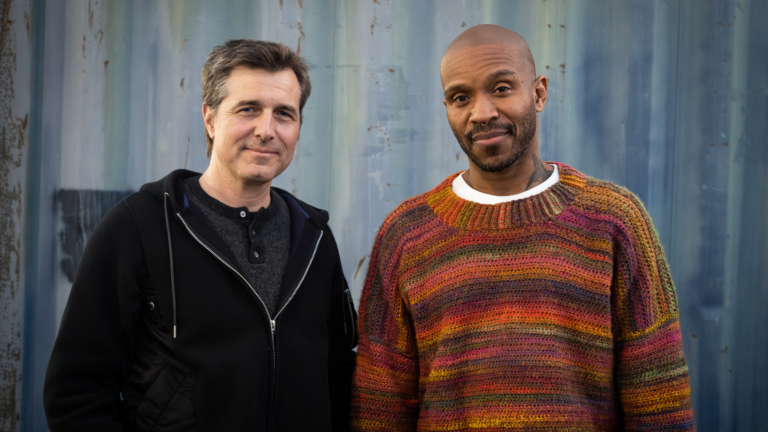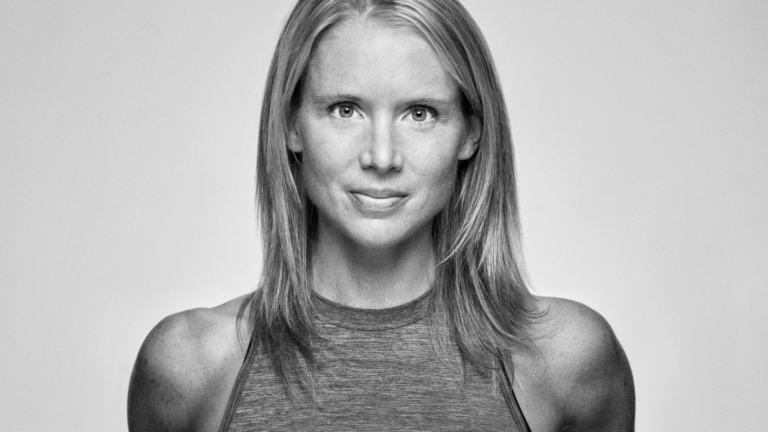This week’s conversation is with Dr. Colleen Cutcliffe, the CEO and Co-Founder of Pendulum Therapeutics.
Colleen’s extensive background includes a doctorate in Biochemistry and Molecular Biology from Johns Hopkins University, and over 20 years of experience managing and leading teams in biotech, pharma, and academia.
In 2013, Colleen left her position as Senior Manager of Biology at Pacific Biosciences to start Pendulum, a company on a mission to improve health through first of its kind research and development in the gut microbiome.
Since its inception, Pendulum has developed a variety of exciting next generation probiotics that are pioneering ways for people to transform their health and wellness.
I’ve been studying gut health and the microbiome for a long time now, and it’s clear that Colleen and her team are on the forefront of creating meaningful change for people.
I was fascinated to learn more about the topic from Colleen, and I hope you’ll leave this conversation with a better understanding of the gut microbiome, as well as some actionable steps we can all take to optimize gut health for a high-performing and vibrant life.
“You want to put great fuel into your car, but you also need a great engine. The fuel is the food you’re eating, the engine is the microbiome… you really need to pay attention to both of these components to have a high performing car.”
In This Episode:
Why did she decide to pursue the gut microbiome industry?
There were two really key factors that made me jump in with both feet. The first was really the microbiome science that was emerging, and things like probiotics and yogurts have been on the shelves for decades, but there hasn’t actually been a novel kind of new species introduced into the world for over 50 years. When you think about any industry where you haven’t had real innovation over 50 years, that’s sort of exciting to anybody who’s kind of a creative thinker.
The need to create a new product for gut health
A study was recently repeated by The Mayo Clinic and they showed that kids under two years old, if they got systematically exposed to antibiotics, they were not only more prone to obesity and diabetes, but also allergies, allergies, ADHD, celiac disease, all of these different things. It really stems from the fact that the antibiotic treatment completely decimates your microbiome, and so you’re missing or lacking these key functions in your body that everybody else has. At the same time this science was emerging, the DNA sequencing application was clear. I read this paper. I connected all of the dots with my daughter. I thought, “Oh my gosh, we could create products that could help millions of people, including my own daughter, who had this early antibiotic treatment and is on a path to these chronic illnesses and lifelong health issues. Let’s do it.”
An overview of the gut microbiome and the bacteria inside
At the 50,000 foot level, your microbiome is all the bacteria, viruses, and fungi. They’re on our skin, they’re in our gut, they’re in our lungs, they’re sort of everywhere, and we’ve co-evolved with these microorganisms over time. They actually play a really important role in our health, and so we think about bacteria and certainly viruses as of late as really bad things that we want to eradicate and they cause us to become sick. That’s true, but the vast majority of them are actually not these bad players. The vast majority of them are actually providing protective functions for us and helping us protect our bodies from the outside world and all the allergens, helping us metabolize our foods, helping us digest our foods. The microbiome is really all of these organisms that help us with our health.
Prebiotics, probiotics, and postbiotics
A prebiotic is the food that feeds the bacteria, so things like fibers and polyphenols. These are prebiotics that feed the bacteria. The bacteria themselves are called probiotics, so prebiotics feed the probiotics, and then kind of a new phrase that’s emerging is this phrase called postbiotics. Each of these bugs, they kind of make their own small molecules that have all of these different impacts in your body. Those small molecules are the postbiotics. The prebiotics are the food for the bacteria and the postbiotics are things that they produce while they’re being fed well. This is kind of the ecosystem of the microbiome.
Your microbiome and metabolism are linked
Everything you eat, after it goes through your stomach, goes right to the microbiome where it gets digested. One of the key things about fiber is that we all know a high-fiber diet is really good for us. We’re supposed to eat lots of fruits and vegetables, but it turns out that actually your body can’t metabolize a bunch of those fibers. They’re entirely metabolized by your gut microbiome, and when your microbiome metabolizes those fibers, it creates all this signaling that leads to GLP-1 and glucose and insulin responses. When you don’t have the right microbes, the fiber you’re eating is literally going right through you and you’re not getting all of those benefits of managing your glucose. I think that that is one of the most important new discoveries in the microbiome is that your metabolism is tied to your gut microbiome.
Stool as a diagnostic marker of gut health
The ancient brain has trained us to look at this diagnostic marker because what you’re doing every day that you look at it is you’re creating a baseline in your head of, “What does my poop look like?” Therefore, you know what it looks like when it’s different, when it changes. That’s your indicator that something is happening inside of your body that’s not quite right, and so it truly is the world’s oldest diagnostic marker. We are ingrained in our ancient brain to be monitoring it, even though we don’t even know we’re doing it. That’s how important and fundamental the gut microbiome is to us.
Why our gut microbiome gets depleted over time
Typically most young people have a really thriving, diverse microbiome that is performing all of its functions. What happens over time is you actually start to lose these microbes, and part of it is through things that we have control over, like our diet and our exercise. Part of it is things that we don’t have control over. When you age, your microbiome becomes depleted. When you undergo stress, your microbiome becomes depleted. As women, every time we go through a cycle or go through menopause, our microbiomes become depleted. Whenever you travel and your circadian rhythm is different, day is night, night is day, your microbiome becomes depleted. There are all of these things that we are just doing as part of being humans and living that are causing us to lose these certain microbes. Yes, a high-fiber diet and great nutrition is super important, but at some point, also giving back these strains allows you to have the one-two punch.
The car analogy
I think about it like a car. You want to put great fuel into your car, but you also need a great engine. The fuel is the food you’re eating, the engine is the microbiome. If you put shitty fuel into a great car, you’re not going to get a high performance, and if you have the top-of-the-line fuel, but the worst engine ever, you’re also not going to get a great high-performing car. You need both of these components to really be successful in your health.
Benefits from a healthy gut
Benefits that come: being able to metabolize your foods better, so better digestion, so you don’t have as much kind of diarrhea and constipation and bloating and gas and pain. People tend to have more energy, and maybe the more important thing is the more sustained energy throughout the day. You don’t have as much of that post-lunch slump or brain fog and things like that. We have a lot of people reporting better workouts, better sleep, and one of the most interesting things is about 60% of our customers have reported that when they’re able to get a better microbiome and this better blood glucose control, 60% of them have reduced sugar cravings. That’s a really interesting part that we haven’t talked about, which is the relationship between your gut and your brain, but your gut, having the optimal gut microbiome can also reduce some of the cravings for the foods that are really not good for your body.
Intermittent fasting
What I have come to realize about intermittent fasting is that the most important thing is the first thing you put in your mouth when you come off of the fasting. Imagine you’ve got this basically a starved environment, so all the microbes in your gut are now waiting for food and they’re all equally waiting for food. That first resource that you give them is the decider between who’s going to thrive and who is not. That is the most important thing, the first thing you eat. And what I do pair with that are also these probiotics that are the good probiotics that help you with the gut lining.
A new strain – Akkermansia
We actually have four or five of these novel strains, and akkermansia is probably maybe the one that’s emerging as potentially a keystone strain in your gut… If you’re low in akkermansia, it’s showing up for you in a wide variety of unhealthy states, and so the one thing I would say that’s actionable from a gut microbiome test right now for sure is if you’re low in akkermansia, you can give yourself akkermansia back. One of the great things I think that’s exciting about what we’ve done is that we’re the only company that’s figured out actually how to grow and create this akkermansia product. It is really now, I think, at this moment an opportunity to be able to take that test, say, “I’m low in this strain, and now I’m going to give it back to myself. I’m going to look at whether I see these health outcomes that I’ve been looking for.”
The effects of travel on your gut health
Traveling to different time zones definitely changes your gut microbiome. Most people experience a change in your stool. Again, going back to our oldest diagnostic marker, GI distress and things like that. You know it’s changing your gut microbiome, and the question is, what can you do about it? I think that one of the most amazing stories that I heard was from somebody who is a physician who travels a lot for work as well. He said basically he always brings… He has like his regimen of like supplements that he brings with him that help him GI distress when he travels. He decided to run an experiment where he didn’t bring anything except for a bottle of akkermansia, this gut-lining strain. He went on this trip and that’s all he had on, and he said he had perfect digestion. He was able to eat whatever he wanted to. He didn’t have GI distress, and this is someone who travels all the time and so has a pretty good sense of their baseline. I thought that was so cool because it just really highlighted the importance of your microbiome.
Not all bacteria is bad
We’re constantly trying to kill all bacteria with our antibacterial wipes and our antiseptic soaps and our antibiotics. We’re just really out to destroy every single one of them, and I would say if there’s one thing people should keep in mind, it’s that they’re not all bad. Maybe cool it with the trying to kill them all.
Anaerobic vs aerobic strains of bacteria
The word “anaerobic,” and aerobic just refers to oxygen, so aerobic means there’s oxygen involved, like when we do aerobic exercise, it’s like we’re using up a lot of oxygen. Then, anaerobic is when there’s no oxygen. When we talk about the gut microbiome, your stomach has oxygen in it, your small intestines have oxygen in it, but when you get to the distal colon, which is where the gut microbiome is and we talk about it, it is anaerobic, meaning there’s no oxygen there. This is kind of one of the big revolutions that I think you’re going to see happening in the probiotic space. All the probiotics that are on the shelf right now are aerobic. They’re not these anaerobic strains. In other words, they can live in some level of oxygen and they’re easily manufactured because you can have oxygen in the system… The future of probiotics is going to be these anaerobic strains that are going to require people to make new manufacturing plants. That’s kind of sprouting up around the world right now that entirely keep all oxygen out of the system to mimic your gut microbiome so these things can grow.
Making a product that actually works
The products are each delivering on a promise for people that they are experiencing real health benefits from, and so they continue to buy the product. We have these very high retention rates, and that’s the core of the business. To me, that’s also the core of building a game-changing health company. You know the product is working when people are paying monthly out of pocket for something because it’s giving them a real health benefit, and they’re sharing those stories back with you and with their doctors. Their doctors are sharing stories with you and you can start to see the flywheel turning and going because you’ve made a product that actually works.
Diversity in the microbiome
This study, what they did was they were looking at the diversity of a person’s microbiome, and they found that people who have dogs actually have a more diverse microbiome than people who don’t have dogs. Then, in that study, they also looked at people who have cats, and they found that people who have cats have basically the same microbiome as people who don’t have cats. The takeaway lesson here, of course, is that dogs are man’s best friend. You’re hanging out with your dog. They’re giving you all these diversity microbes, and cat’s are literally more aloof. They’re not really hanging out with you, and so having them is not really changing your microbiome. This study really shows us that having dogs, pets, that you’re actually kind of hugging and interacting with, is actually good for your microbiome diversity, and so I thought that study was really interesting.
Making a user-friendly product
One of the things you don’t ever think about as a pharmaceutical drug developer, at least on the science side, is, who’s going to be using this in the end? Is it a friendly way for them to be able to use it? That’s how you end up with something like insulin where you say like, “This thing works. You just inject it into your stomach a few times a day, every time you eat.” What’s the problem? The thing works. I think what I learned from that is, you know, if you really want people to improve their health and to use this product, you just think about them for a second. I think when we started this company, that was very much in my mind. How do we take the best of both of these worlds?
Thriving in change
I think it’s fun, but maybe that’s the sickness of people that start their own companies, say it’s a disease. I think I thrive in change. I love learning, so every part of building this company has been a learning process. I didn’t know anything. I didn’t even know what a venture capitalist was when I started this company. I didn’t know how to do fundraising. We didn’t have a bank account. I didn’t even know who did corporate bank accounts. I didn’t know what an NDA was, I didn’t know like a non-disclosure agreement. I didn’t know anything about anything. This whole process has just been a series of learning what is fundamental for many people in their lives, but to build a company, you have to learn to some degree all of it. You can bring in experts and all of that, but because you’re starting it from scratch, it doesn’t allow you to just completely not know another space that is required for a company to grow. I think it’s exciting.


